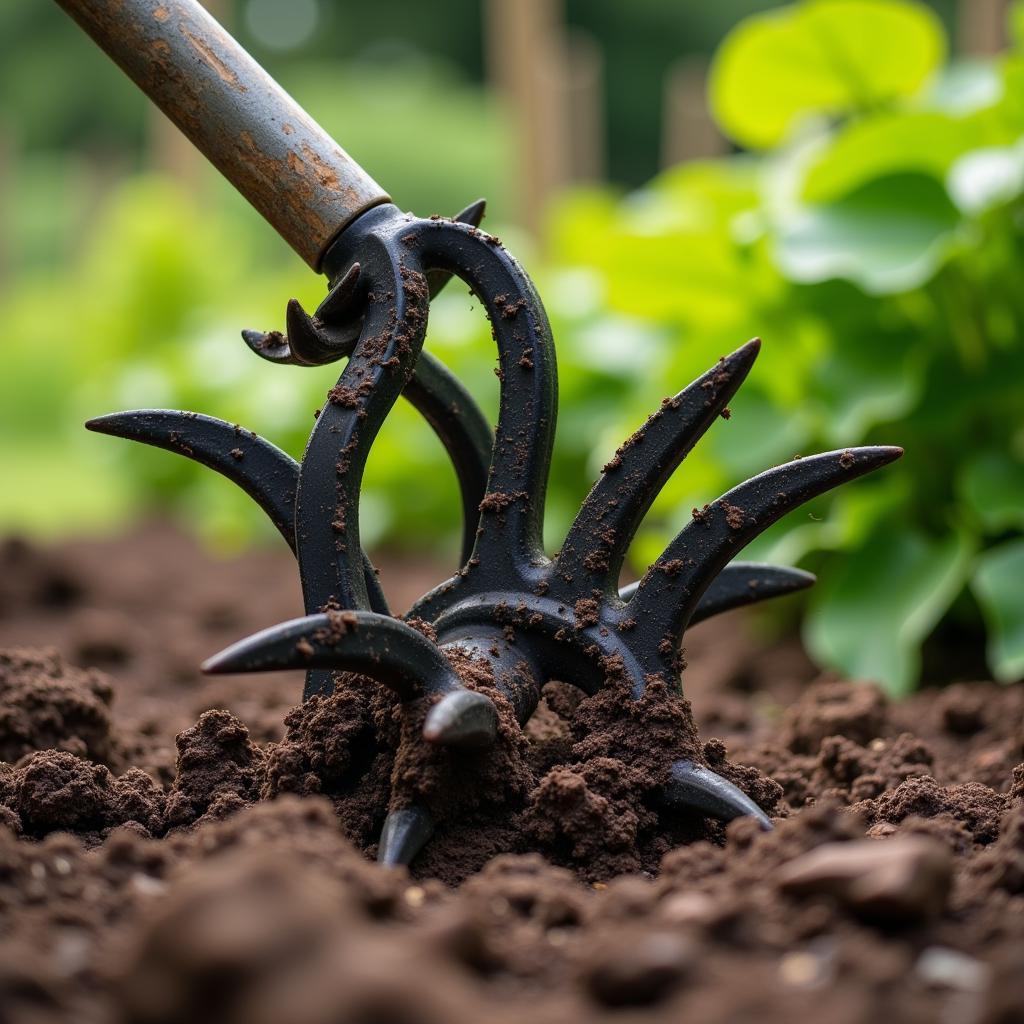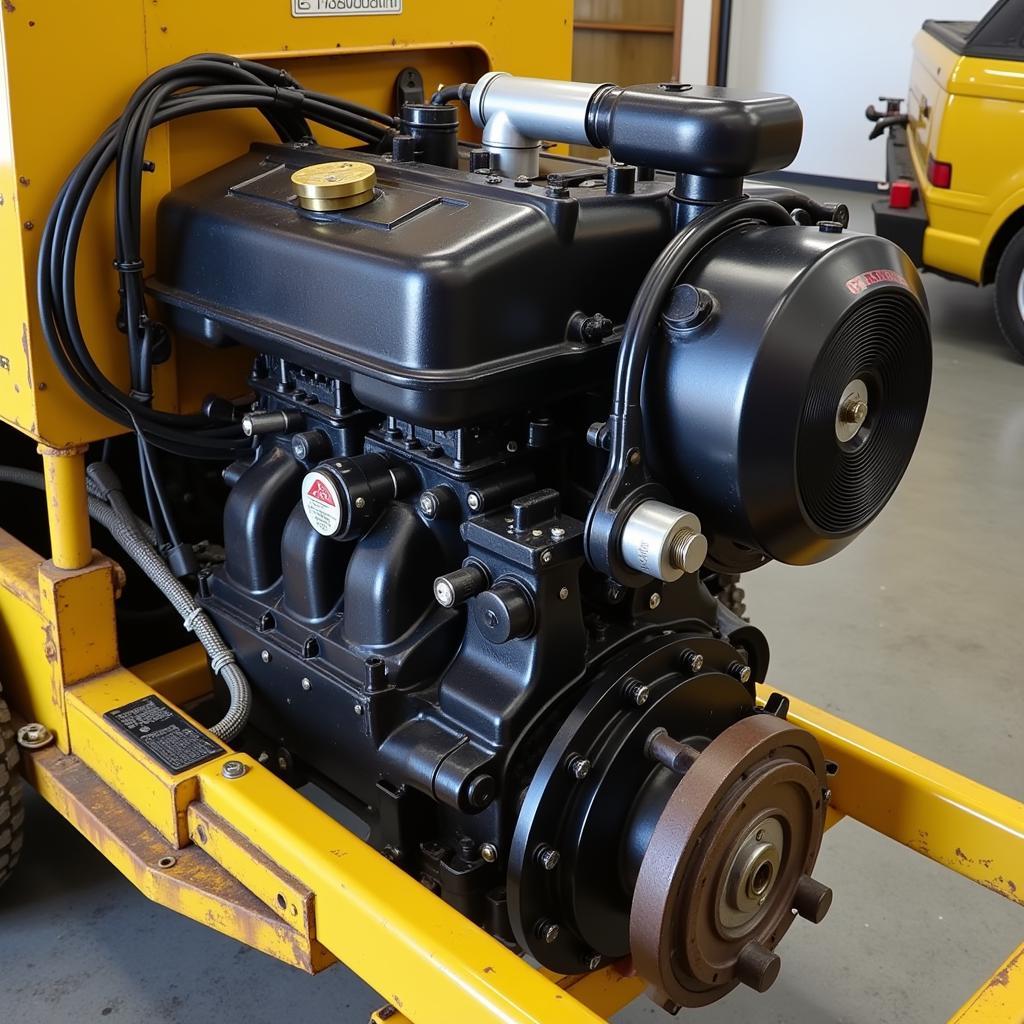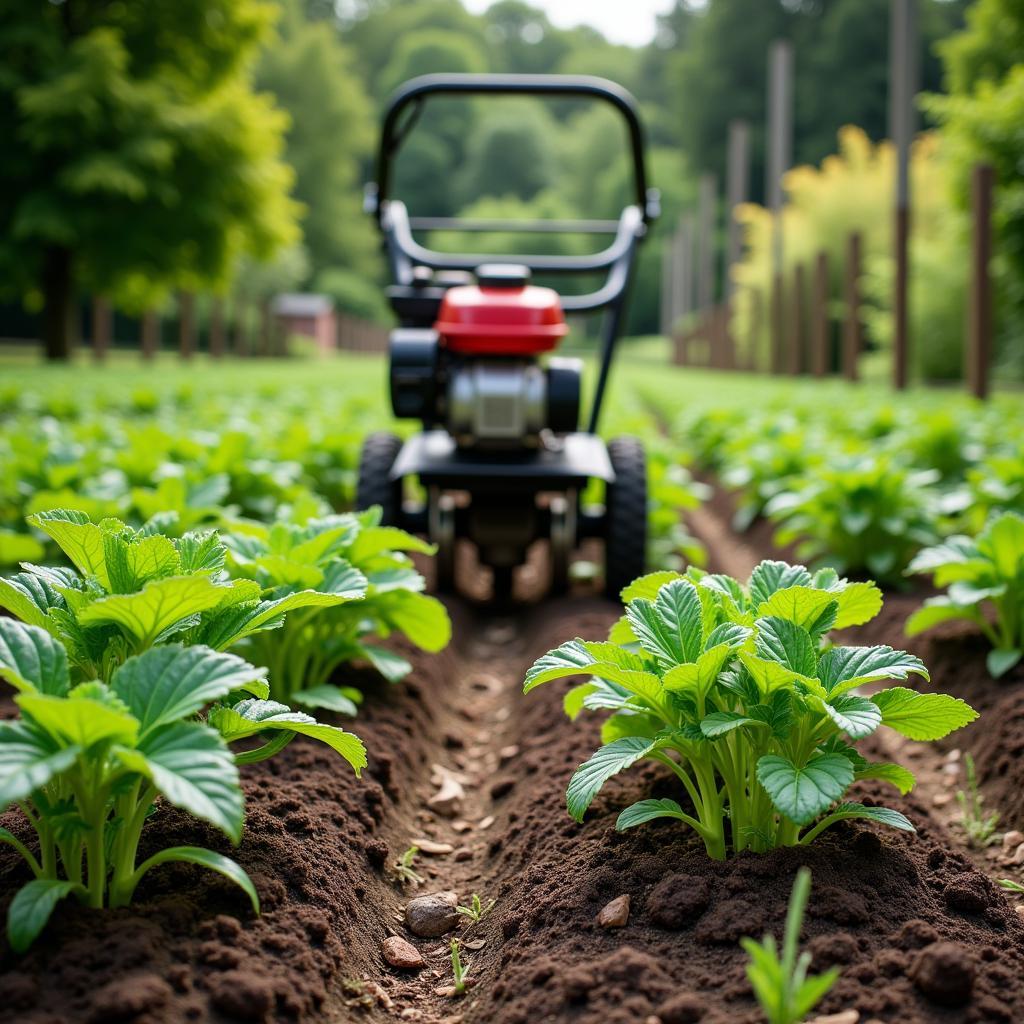For generations, the Troy-Bilt Horse tiller has been a workhorse in gardens and fields, embodying a legacy of reliability and robust performance. While modern tillers have emerged, the allure of these vintage machines remains strong, especially for those seeking a blend of classic craftsmanship and enduring power. Whether you’re a seasoned gardener or just starting out, understanding the capabilities and nuances of an old Troy-Bilt Horse tiller can significantly enhance your farming experience.
 Vintage Troy-Bilt Horse tiller actively tilling soil in a garden.
Vintage Troy-Bilt Horse tiller actively tilling soil in a garden.
A Legacy of Durability: Why Choose an Old Troy-Bilt Horse Tiller?
One of the primary reasons these tillers remain sought after is their exceptional build quality. Crafted with robust materials and straightforward mechanics, old Troy-Bilt Horse tillers were built to last. This durability translates into a machine that can withstand years of demanding use, making them a wise investment for those seeking long-term reliability.
Decoding the Mechanics: How Does It Work?
The genius of the old Troy-Bilt Horse tiller lies in its uncomplicated design. Unlike modern tillers with complex belts and chains, these vintage machines typically employ a direct-drive system. This means the engine’s power directly transfers to the rotating tines, resulting in efficient tilling with minimal power loss.
 Detailed view of the engine on an old Troy-Bilt Horse tiller.
Detailed view of the engine on an old Troy-Bilt Horse tiller.
Getting the Most Out of Your Tiller
While inherently powerful, operating an old Troy-Bilt Horse tiller effectively requires understanding its unique characteristics:
- Weight Distribution: These tillers are often heavier than their modern counterparts. This weight, while contributing to stability, requires a bit more effort to maneuver, especially in tight spaces.
- Speed Control: Most vintage models lack the variable speed settings found in newer tillers. Mastering speed control comes with practice, ensuring you achieve the desired tilling depth without overworking the machine.
- Maintenance: Regular maintenance is key to keeping these workhorses running smoothly. Simple tasks like oil changes, spark plug checks, and cleaning the air filter can significantly extend the life of your tiller.
Common Questions About Old Troy-Bilt Horse Tillers
Are parts readily available for these older models?
Absolutely! One of the advantages of owning a Troy-Bilt is the readily available parts, even for older models. Numerous online retailers and local repair shops specialize in vintage tiller parts.
Can these tillers handle tough soil conditions?
You bet! The robust build and direct-drive system of old Troy-Bilt Horse tillers make them well-suited for challenging soil types, including clay and rocky terrain.
What type of oil is recommended for these tillers?
It’s best to consult the owner’s manual for your specific model. However, a high-quality SAE 30 engine oil is generally suitable for most old Troy-Bilt tillers.
Embracing the Legacy
Owning an old Troy-Bilt Horse tiller is more than just owning a gardening tool; it’s about connecting with a legacy of dependable performance. By understanding its mechanics, appreciating its quirks, and providing proper care, you can unlock the full potential of this timeless machine, ensuring it continues to cultivate success in your garden for years to come.
 Thriving vegetable garden with rows perfectly tilled using an old Troy-Bilt Horse tiller.
Thriving vegetable garden with rows perfectly tilled using an old Troy-Bilt Horse tiller.
Need help with your horse or pet? Contact us!
Phone Number: 0772127271
Email: [email protected]
Address: QGM2+WX2, Vị Trung, Vị Thuỷ, Hậu Giang, Việt Nam
Our customer support team is available 24/7 to assist you.